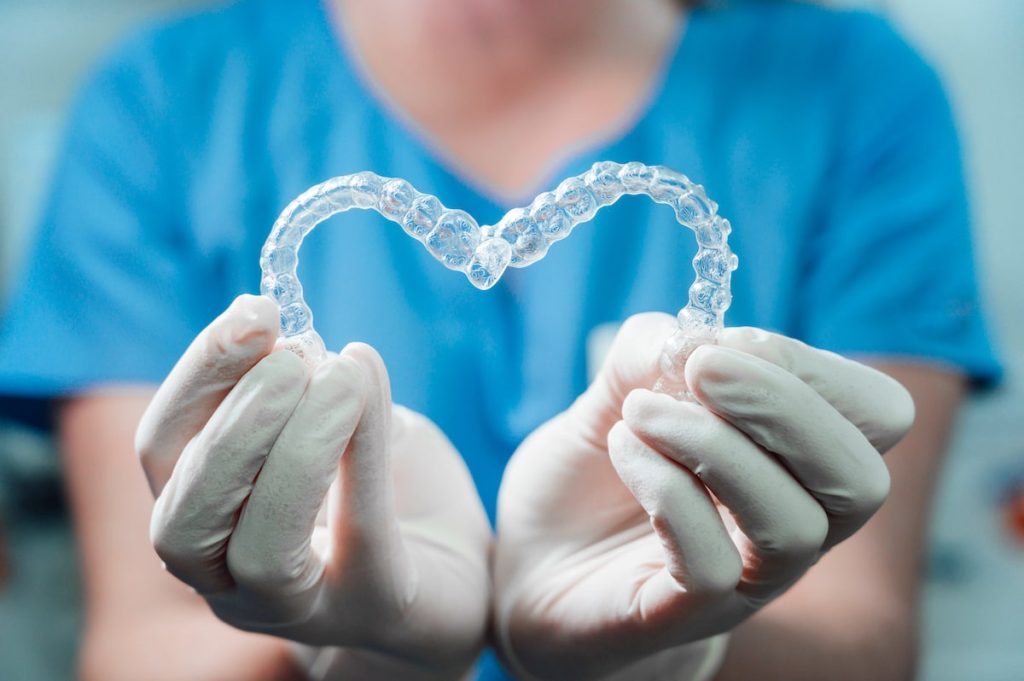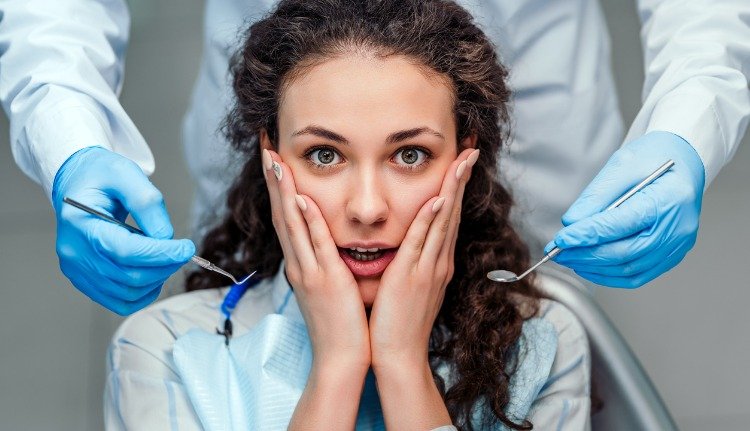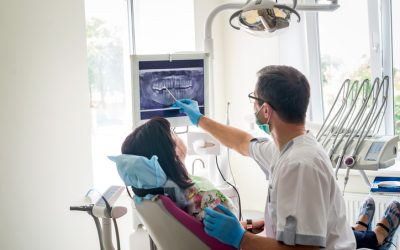July 19, 2024
Dr. Andres de Cardenas
All-on-4 dental implants, cosmetic bonding, Cosmetic Dental Care Services, cosmetic dentist Miami, Cosmetic Dentist Whitening, Cosmetic Dentistry, Daily Health Tips, dental care, Dental Care Tips, Dental Cleaning Appointment, Dental Implant Procedure, dental solutions, Dentist Appointment, family dental Care dentist, Family Dentist, FL, healthy teeth, Natural teeth whitening, Oral Cancer, Oral Care, professional denstists, Smile Makeover, Teeth Alignment, Teeth discoloration, Teeth Whitening, teeth whitening sensitive teeth, The Miami Cosmetic Dentist
Family Dental Care Miami | Miami Cosmetic Dentist > Blog > dental care > Things To Know Before Getting Invisalign Clear Aligner
Things To Know Before Getting Invisalign Clear Aligner
When it comes to achieving a brilliant, healthy smile, more and more people are turning to Invisalign as their go-to solution. This clear aligner has rapidly become a popular alternative to standard metal braces thanks to its discreet and comfortable design, making the journey to a perfect grin all the more enjoyable.
But before diving head-first into the world of Invisalign, it’s important to understand the ins and outs of the treatment and how it compares with traditional braces.
From the basics of how Invisalign works to the maintenance of Invisalign, here are the essential things to know before getting started with Invisalign treatment. As per a study, Invisalign’s inconspicuous nature and flexibility offer a more seamless experience than traditional orthodontics.
 1. What Is Invisalign?
1. What Is Invisalign?
Invisalign treatment has become a popular alternative to traditional dental braces. Invisalign clear aligners are renowned for their high discretion level, letting you improve your smile without the noticeable look of metal brackets.
Invisalign is an orthodontic device that uses clear, medical-grade plastic aligners to straighten teeth. It’s a preferred braces alternative for many dental patients due to the invisible design and convenience. The removable aligners allow you to eat, drink, brush, and floss normally.
Each aligner is designed to make slight adjustments to the position of your teeth. This process is gradual, with each aligner moving your teeth gradually, week by week, until they are in the desired position.
These basics make Invisalign a modern and popular alternative to traditional orthodontics. The aligners offer remarkable discretion, flexibility, and comfort, making them an appealing choice for teens and adults who want a better smile.
2. It’s Not Suitable For Everyone
While Invisalign can correct various orthodontic issues, it is unsuitable for all cases. Invisalign works best for mild to moderate teeth misalignments such as overcrowding, gaps, overbite, underbite, and crossbite. Severe teeth rotations, shifting molars, or complex bite issues may require traditional braces.
While Invisalign presents numerous advantages, it’s essential to remember that it’s not the ideal solution for everyone. Invisalign is most effective for treating mild to moderate orthodontic issues, such as overcrowding, gaps, and overbite problems. However, traditional braces or other orthodontic treatments may be more suitable in cases of severe malocclusion or complex dental situations.
Before starting Invisalign treatment, it’s crucial to consult with an experienced orthodontist to determine whether it’s the right option for you. A consultation allows the dentist to evaluate your teeth and oral health thoroughly and recommend the most suitable treatment plan to meet your individual needs.
 3. Invisalign Clear Aligners Require Commitment
3. Invisalign Clear Aligners Require Commitment
Pursuing Invisalign treatment requires a steadfast commitment to achieve the desired results. These custom-made clear aligners, tailor-made to fit your teeth, work by applying gentle pressure to shift your teeth into a better alignment gradually. But the key to a successful outcome is how consistently you wear them.
Ideally, you should wear your aligners for about 20 to 22 hours each day, removing them only when you need to eat or drink anything other than water, brush, and floss. This might seem like a lot, but the more you adhere to this requirement, the more effectively and swiftly you’ll reach your goal.
Failing to commit to this schedule, frequently taking your aligners out, or missing entire days of wear can result in prolonged treatment time and possibly compromise the final results.
4. Regular Cleaning Is Mandatory To Avoid Dental Issues
Maintaining good oral hygiene is crucial when undergoing Invisalign treatment. The clear aligners you’ll be wearing to shift your teeth need a consistent and thorough cleaning to retain their transparency and efficacy over the period of your treatment.
Regular follow-up appointments with your orthodontist are crucial to check your progress and receive your next set of aligners. Typically, check-ups are scheduled every 4 to 6 weeks.
The aligners can accumulate dental plaque and food particles, making them less clear and leading to dental issues like cavities or gum disease if not cleaned properly. Therefore, it’s recommended that you rinse your aligners each time you remove them, brush them gently with a soft toothbrush, and ensure they’re clean before putting them back in your mouth.
Regular and proper cleaning is non-negotiable to keep your oral health in check and your aligners effective.
5. Invisalign Treatment Time Varies
One size certainly doesn’t fit all in orthodontic treatment. The length of time required for Invisalign treatment varies considerably depending on each individual’s unique dental needs and the complexity of their case.
The treatment duration varies between individuals, depending on the complexity of their situation. Most adults complete their Invisalign treatment within 12 to 18 months. However, you can begin to see results in a matter of weeks.
Invisalign treatment often lasts around 12 to 15 months for the average case. However, this is just an average. Some individuals may achieve their desired results faster, while more complex cases may require up to or over 24 months.
It’s important to remember that patience is key in orthodontic treatment. While it might take time, the result of a healthier, more confident smile is worth waiting for.
6. You May Need To Wear Retainers And Brace After Treatment
It’s a common misconception that orthodontic treatment ends when your final set of aligners comes off. However, even after completing your Invisalign journey, there’s one important step to ensure the longevity of your new smile: wearing a retainer.
A retainer keeps your teeth in their newly corrected positions while the surrounding gum and bone tissue adapts. This is a crucial part of the treatment because, without it, there’s a high risk that your teeth will slowly drift back to their original positions. This phenomenon, known as orthodontic relapse, can undo the hard work and financial investment you’ve put into your Invisalign treatment.
Your orthodontist will instruct you how often and how long you need to wear your retainers. This typically involves wearing them full-time for a brief period, then switching to only wearing them at night. Adherence to your retainer regimen is as critical as wearing your aligners during the treatment phase. It’s the key to enjoying and maintaining your perfectly aligned smile in the long run.
 7. There May Be Some Discomfort
7. There May Be Some Discomfort
Though Invisalign is a modern alternative to traditional braces, it’s important to remember that teeth realignment is your body adjusting to changes—so some discomfort initially is entirely normal.
When you start wearing a new set of aligners, you may experience some degree of discomfort or pressure. This generally occurs during the first few days and is a sign that your teeth are gradually moving to their desired position, a fundamental part of the teeth straightening process. This sensation, often described as a feeling of tightness or slight soreness, typically subsides after a few days as your mouth adjusts to the new aligner.
Though this discomfort might feel like an inconvenience, it’s actually a sign that your Invisalign aligners are working effectively. If you experience prolonged or severe discomfort, however, it’s advisable to consult with your orthodontist to ensure everything is progressing as it should.
In conclusion, Invisalign offers many advantages over traditional orthodontic approaches, including the discretion and flexibility of removable aligners. However, it’s essential to have a thorough understanding and realistic expectations before undertaking any orthodontic treatment.
Always consult with your dentist or orthodontist to discuss your options and select the best solution for you. Little changes to your lifestyle for a designated time could reward you with the healthy, straight smile you’ve always desired.
After all, a beautiful smile is always in style!
Get the Smile you Deserve!
Seek out the best cosmetic dentist, Dr. Andres de Cardenas, and call us today!
Call Dr. Andres de Cardenas today at 305-251-3334!
Cosmetic dentistry offers many options for people who are unhappy with the appearance of their smile. If you’re one of these people, we encourage you to seek out the veneers, cosmetic dentistry in Miami.
Get In Touch With Us
Recent Posts
- Bright Smiles, Brighter Futures: Why Cosmetic Dentist Whitening Is Worth It
- Safeguard Your Smile: Family Dental Care Dentist Debunks DIY Dentistry Tips!
- Dental Implant FAQs: What to Know About the Recovery Process
- The Health Benefits Of Cosmetic Dental Care Services: Beyond Vanity
- The Ultimate Cosmetic Dental Checklist For Miami, FL Residents
Related articles
July 5, 2024
Dr. Andres de Cardenas
All-on-4 dental implants, cosmetic bonding, Cosmetic Dental Care Services, cosmetic dentist Miami, Cosmetic Dentistry, Daily Health Tips, dental care, Dental Care Tips, Dental Cleaning Appointment, Dental Implant Procedure, dental implant recovery, dental implants, dental solutions, Dentist Appointment, family dental Care dentist, Family Dentist, FL, healthy teeth, Oral Cancer, Oral Care, professional denstists, Smile Makeover, Teeth Alignment, Teeth discoloration, Teeth Whitening, The Miami Cosmetic Dentist
Safeguard Your Smile: Family Dental Care Dentist Debunks DIY Dentistry Tips!
June 21, 2024
Dr. Andres de Cardenas
All-on-4 dental implants, cosmetic bonding, Cosmetic Dental Care Services, cosmetic dentist Miami, Cosmetic Dentistry, Daily Health Tips, dental care, Dental Care Tips, Dental Cleaning Appointment, Dental Implant Procedure, dental implant recovery, dental implants, dental solutions, Dentist Appointment, Family Dentist, FL, healthy teeth, Oral Cancer, Oral Care, professional denstists, Smile Makeover, Teeth Alignment, Teeth discoloration, Teeth Whitening, The Miami Cosmetic Dentist


